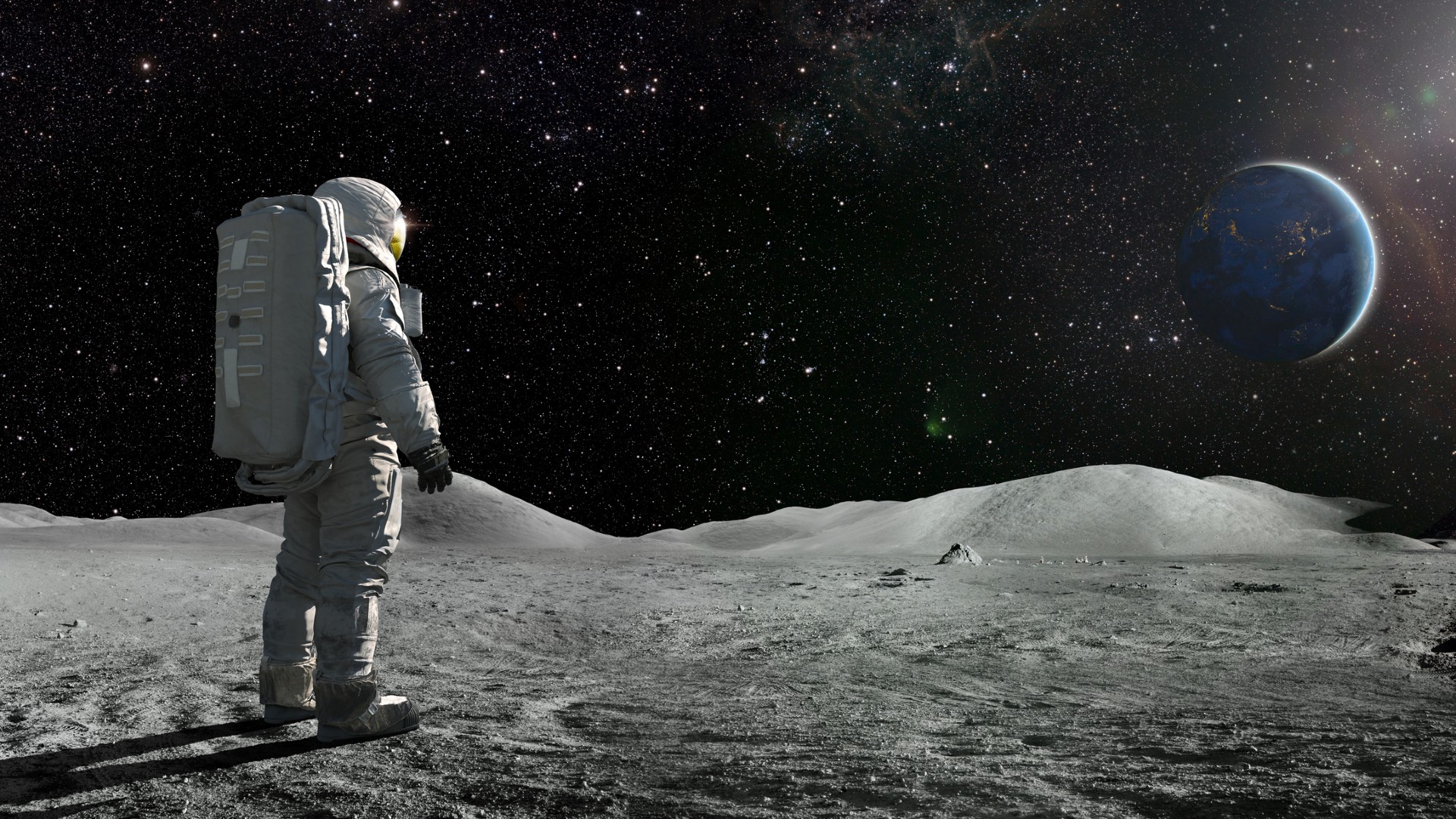Several countries have competed to send spacecraft, and even humans, to reach and land on the Moon. Which countries have successfully landed on Earth’s natural satellite? Since the Cold War era between the United States and Russia in the 1960s, the Moon has become the destination of various countries to send their spacecraft. These two countries competed to conquer space exploration first.
Since then, several other countries have had similar goals and dreams of landing on the Moon. However, landing on the Moon is not easy, as since the Cold War era between the Soviet Union and the US, only three more countries have been able to land on the Moon.
Here is the list of countries that have successfully landed on the Moon:
Russia
The Soviet Union (now Russia) is recorded as the first country to successfully land a spacecraft on the surface of the Moon.
The Luna 2 spacecraft officially launched on September 12, 1959, and successfully reached the Moon two days later on the eastern surface of the Mare Serenitatis near Aristides, Archimedes, and the Autolycus Crater.
However, the Luna 2 landing did not go smoothly, and it actually collided with the surface of the Moon before the spacecraft could send any images.
Luna 2 landed various Soviet symbols on the surface of the Moon, which were carried in two metal spheres.
During the only visit to the United States a few days after the Luna 2 mission, Soviet Prime Minister Nikita S. Khrushchev presented a replica of these spherical banners to President Dwight D. Eisenhower.
The Soviets again attempted to launch other spacecraft into space after Luna 2, one of which was Luna 9. This spacecraft was launched from the Baikonur Cosmodrome and landed successfully on February 3, 1966.
United States
The Cold War era between the Soviet Union and the US heated up further after Luna 2 successfully reached the Moon in 1959. The US committed to surpassing this achievement and sending the first humans to the Moon.
About 10 years after the success of Luna 2, the US finally launched the Apollo 11 mission from Cape Kennedy, USA, on July 16, 1969.
The Apollo 11 mission consisted of three crew members: Commander Neil Armstrong, Command Module Pilot Michael Collins, and Lunar Module Pilot Edwin “Buzz” Aldrin. They landed on the Moon on July 20, 1969.
The history of the Apollo 11 mission is timeless. Neil Armstrong is recorded as the first human to set foot on the lunar surface, followed by Buzz Aldrin.
While Collins waited in lunar orbit, he observed the landing from the Columbia command module, the only means of returning these three men to Earth.
It is estimated that 650 million people watched as Armstrong stepped onto the Moon and heard his voice describing the event as “…one small step for a man, one giant leap for mankind.”
China
About 40 years after the Cold War era, no country had yet successfully landed on the surface of the Moon until China launched the Chang’e 3 mission in 2013.
Chang’e 3 is a lunar landing mission of the China National Space Administration (CNSA) designed to study Earth’s natural satellite. This spacecraft was launched with the Long March 3B rocket from the Xichang Satellite Launch Center on December 1, 2013.
Chang’e 3 then landed on the Moon on December 14 and deployed the Yutu Rover onto the lunar surface. This lander was designed to operate for approximately one year on the lunar surface.
The lander is equipped with three panorama cameras, a topographic camera, an extreme ultraviolet camera, and an ultraviolet telescope.
The Yutu rover was designed and built by the China Academy of Space Technology (CAST). It is a six-wheeled vehicle powered by solar cells. Mounted on the LLV, this vehicle was lowered to the lunar surface after landing.
India
India became the fourth country to successfully land on the Moon through the Chandrayaan-3 mission. This spacecraft landed perfectly on the lunar surface on August 23, 2023.
According to Space, Chandrayaan, which means ‘moon vehicle’ in Sanskrit, was launched from the Satish Dhawan Space Center in Sriharikota, Andhra Pradesh, southern India on July 14.
This mission marked India’s second attempt to land on the moon. The first attempt, in 2019 with Chandrayaan-2, crashed into the lunar surface due to software issues and difficulties in braking during descent.
The success of this Indian mission marks the first time for an Indian spacecraft and makes the Bollywood Land the fourth country to achieve this feat.
Some countries that have successfully landed on the Moon in a controlled manner are the United States, China, and the former Soviet Union, Russia.
Japan
Japan’s Smart Lander for Investigating Moon (SLIM) successfully landed on the Moon on January 19, 2024. This makes Japan the fifth country to ever land on the Moon.
SLIM was launched last September, along with an X-ray telescope called XRISM. This spacecraft was launched into low Earth orbit shortly after liftoff (and recently sent its first test photos), but SLIM went further.
The spacecraft took a long and winding route to the Moon, eventually arriving in lunar orbit on Christmas Day. Its initial orbit was highly elliptical, bringing SLIM within 373 miles (600 kilometers) of the lunar surface at its closest point and 4,000 km at its farthest point.
SLIM’s mission is to study the surrounding environment in Mare Nectaris or the “Sea of Nectar,” located about 15 degrees south of the lunar equator using the spectrometer onboard.
Data from this instrument can provide insights into the composition of the area, which in turn can explain the formation and evolution of the Moon, but this cannot be done unless SLIM’s solar panels are active.
SLIM also carries two small rovers, a small hopper called LEV-1, and a spherical vehicle known as LEV-2. These small robots are designed to launch from the SLIM mothership, collect data, and take pictures.
After briefly landing on the Moon in a ‘hop’, the spacecraft successfully recovered nine days later.



